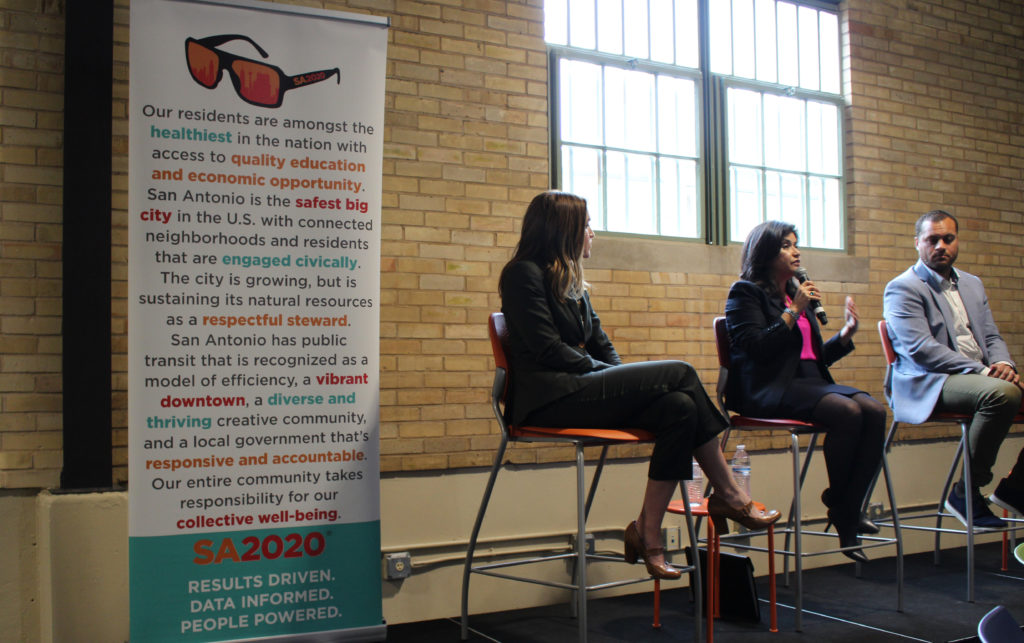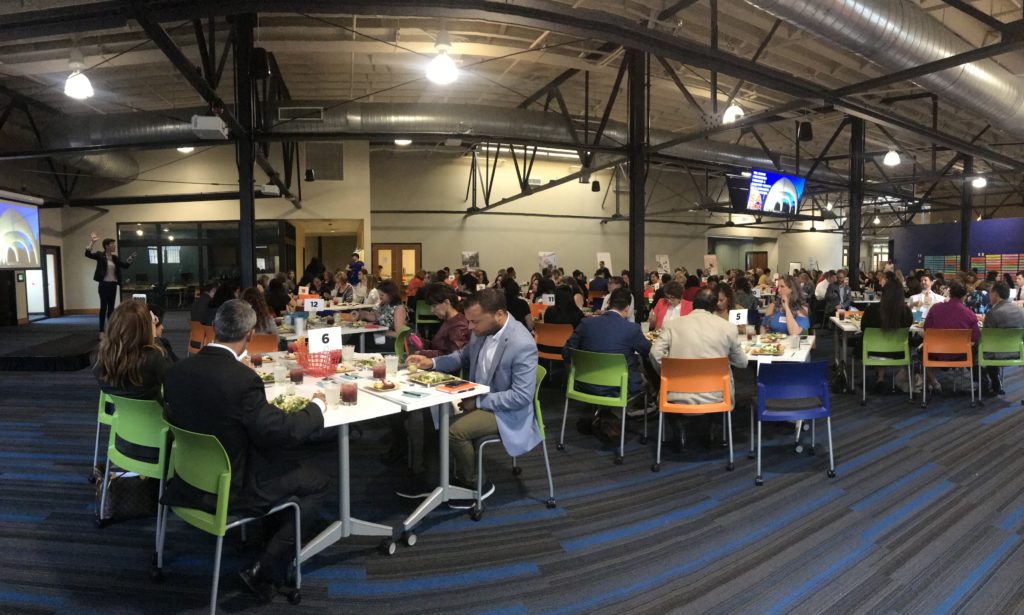As futuristic movies and TV have shown us, it’s hard to predict exactly what the future will hold. (Where are our flying cars?) And when it comes to the future of a community and the people in it, there are a whole lot of factors to consider: federal or state policy changes, the automation of jobs, natural disasters, new technology, and more.
In a city that has thought very intentionally about our future and what we want out of it, we know it’s important to think about these potential changes and disruptions now. So, we were thrilled to partner with the Institute of Alternative Futures (IAF), who helped de-mystify what the future might hold for San Antonio’s human progress and human services. Using their forecasting skills, IAF mapped out four scenarios for human need, human progress, and human services through the year 2035. You can see that full report here to get an idea of what could happen in the next fifteen years—both good and bad.
To start a local conversation around our potential future—and what we need to be doing in the present—we got together with some community members last Wednesday for our Beyond 2020 Luncheon. Clem Bezold, PhD and IAF founder, kicked things off, helping us understand what outside forces might affect the progress we’re making together. And while we certainly have more work to do, Clem reminded us that our shared vision—and community-wide alignment around that vision—sets us up well for a brighter future. “Creating a vision is important not for what it says, but for what it does,” he said.
Then, we heard from a few local community leaders, representing economic development, housing, healthcare, local government, innovation, and education. We asked, “How can San Antonio become ‘future-proof’?” How can we put in the work now to ensure that no outside forces or factors prevent us from reaching our bold goals?

Our brilliant panel of Jenna Saucedo-Herrera (San Antonio Economic Development Foundation), Lourdes Castro Ramírez (University Health System Foundation), Brian Dillard (City of San Antonio Office of Innovation), and Dr. Cynthia Teniente-Matson (Texas A&M University-San Antonio) shared their insights on what needs to be risked today in order to reach our shared vision, and what each of their institutions is doing to help us future-proof San Antonio.
“We’re preparing students to be great and strategic thinkers,” said Dr. Matson, explaining TAMU-SA’s approach to future-proofing higher education, which relies on strategies like experiential learning. “We’re preparing students for their third or fourth jobs,” not just their first job right out of college.
“One of the biggest things that hinders progress is ego-driven items and fear of working together and breaking down those silos,” said Brian, the City’s Chief Innovation Officer. To spur human progress, we need to create a “culture of ecosystems.”
Lourdes, President of University Health System Foundation (and Chair of the Mayor’s Policy Task Force) demonstrated how we can create those ecosystems. Understanding the role that stable, affordable housing has on health, local leaders have created the San Antonio Healthy Homes Network to tackle health and affordable housing together.
And Jenna spoke to the value of setting big goals together and then following through on that plan. “We’ve got to rally behind something big—a big vision we can all be excited about.” (You can watch the full panel discussion here.)
And then, because our collective work won’t end in 2020—and because we love audience participation—we asked every guest to tell us what they want to see preserved and improved in San Antonio in the next ten years. (A throwback to the original SA2020 visioning process!) The answers to both questions made us even more excited to continue this work together.
Preserve… “our beautiful, accessible neighborhoods for families”, “lack of fear to innovate”, “our culture, history, and preservation of such”, “the momentum around collaboration”
Improve… “equitable education opportunities”, “housing affordability for all families”, “thoughtful development”, “multimodal transit”, “civic engagement”
As we’ve said, the work won’t end next year, which means we want to hear everyone’s answers to these questions as we start to look at our shared priorities beyond 2020. Stay tuned for those opportunities! In the meantime, know that our community is thinking intentionally about our future. San Antonio is the only large city in the nation with a shared community vision written by the people who call the community home, a nonprofit organization who holds us accountable to that vision (that’s SA2020), and more than 150 institutions who are actively aligning their work to move the needle on that vision. These are the institutions who understand the need to work across systems to make your vision a reality. Don’t see one you work in or volunteer with? Do the thing and get involved.

